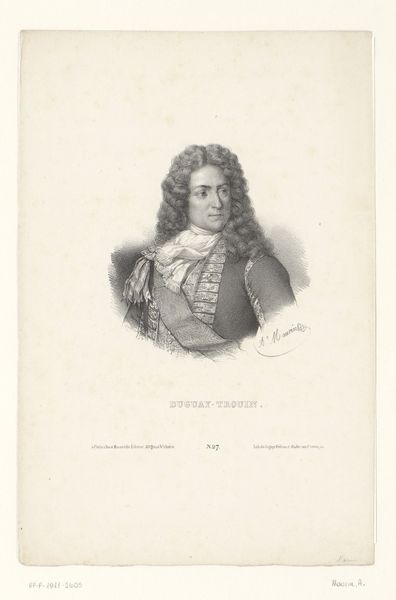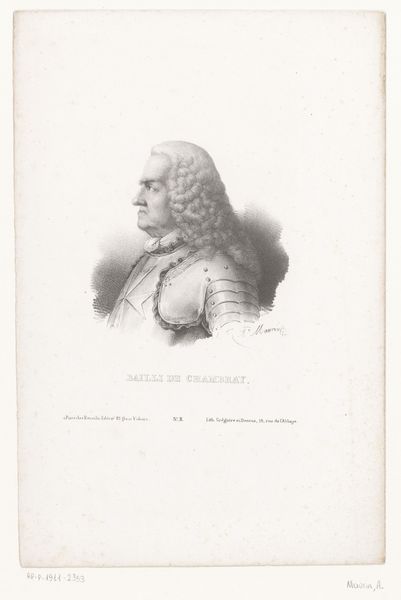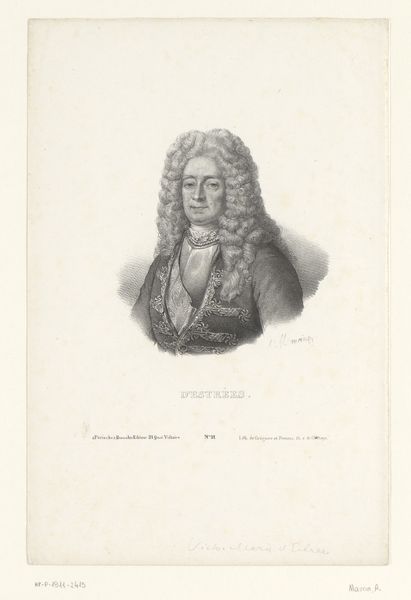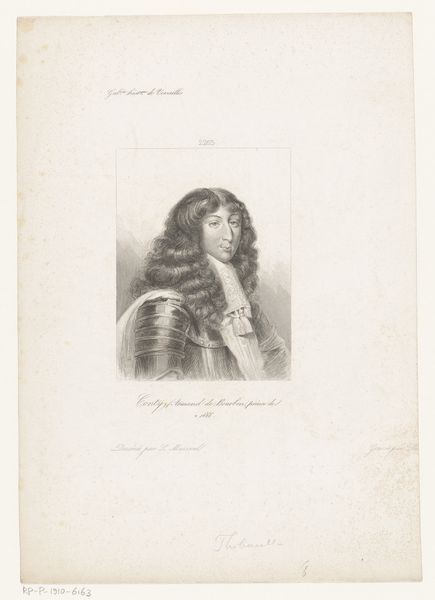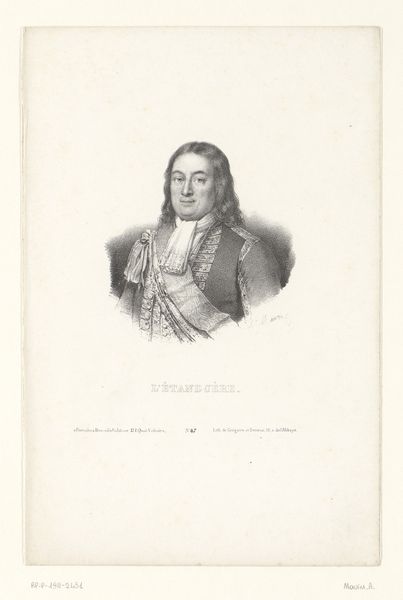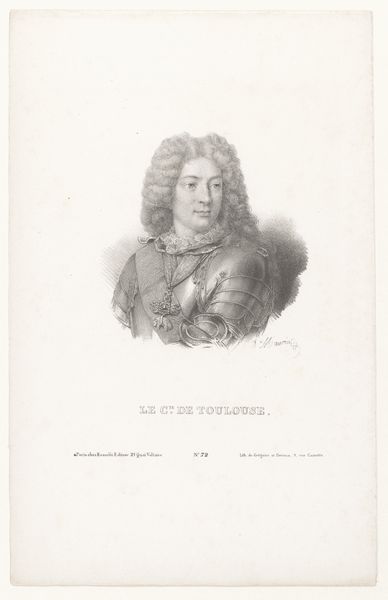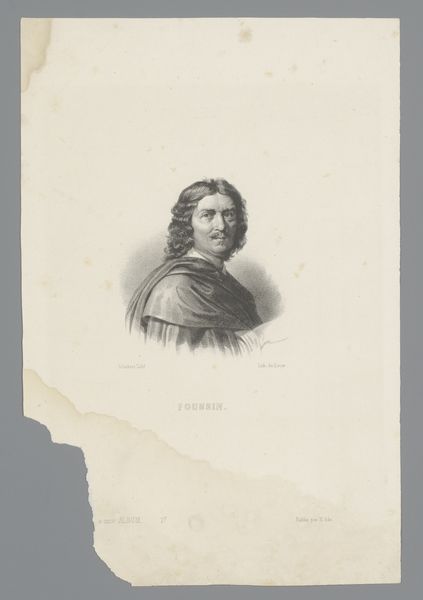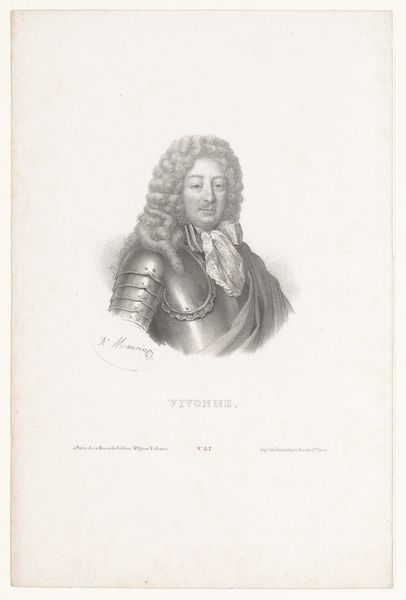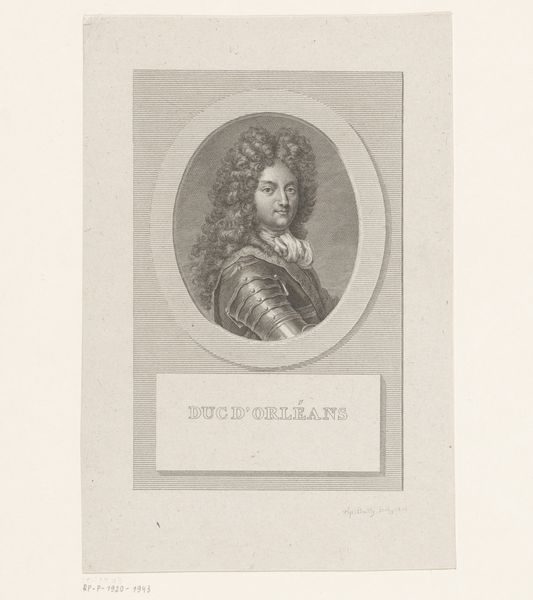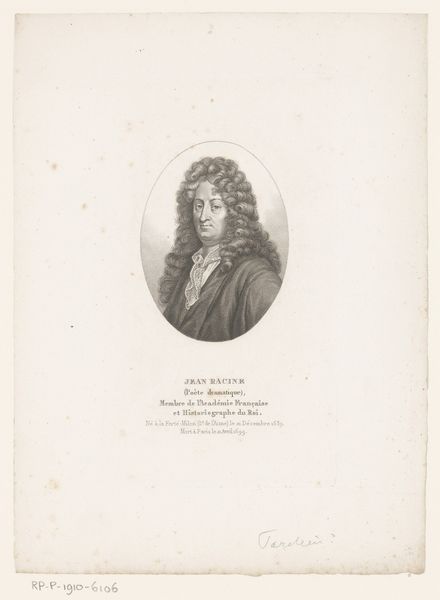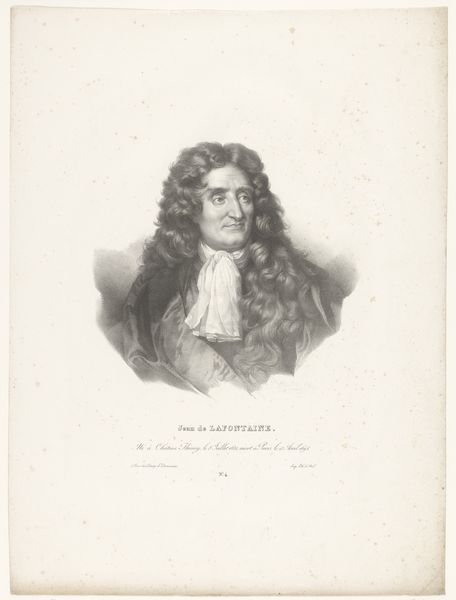
Portret van François Louis Rousselet (markies van Châteaurenault) 1836
0:00
0:00
print, graphite
#
portrait
#
neoclacissism
# print
#
pencil drawing
#
graphite
#
academic-art
Dimensions: height 277 mm, width 186 mm
Copyright: Rijks Museum: Open Domain
Curator: Here we have a portrait of François Louis Rousselet, Marquis of Châteaurenault. It's an 1836 print by Antoine Maurin, rendered in graphite. It belongs to the neo-classicist style, but also demonstrates the strong influence of Academic Art in the period. Editor: My first impression is one of controlled power. There’s a definite stillness to the portrait, a sense of dignity that verges on coldness. That tight rendering in graphite really emphasizes that. Curator: Absolutely. Considering the socio-political climate of 19th-century France, it's important to examine who gets memorialized in art. The Marquis held a position of considerable influence during his lifetime; this image helped shape and perpetuate it for future generations. Editor: And that position, in turn, was defined by class, gender, and power dynamics within the aristocracy. The Marquis’s gaze, though subtle, speaks volumes about authority. The armor, although it looks more like costume than actual battle armor, makes the portrait feel overtly masculine, further cementing those traditional roles and expected behaviour for that time. Curator: You can really see the way Maurin plays with light and shadow to both ennoble his subject and reinforce his position within society. The almost sculptural treatment is no accident. There’s a distinct connection to classical representations of heroes and leaders in how his physique, presence, and costume all relate. Editor: It seems relevant too that graphite – seemingly a 'humble' material when one thinks about grand portraiture - renders a particularly controlled type of visual propaganda. The very neat lines of his periwig become symbolic. In Academic Art and the neo-classical period especially, control itself became the most critical virtue; there were clear rules in place for how society and also how art, itself, were ordered. Curator: This work provides valuable insight into how art served to uphold the social hierarchy. By examining this portrait within the context of the era, we start to unpack its role in shaping perceptions and perpetuating privilege. Editor: For me, it's an intriguing piece in terms of how visual codes have historically acted as reinforcement of hierarchies of power. The image speaks volumes beyond its straightforward likeness.
Comments
No comments
Be the first to comment and join the conversation on the ultimate creative platform.
